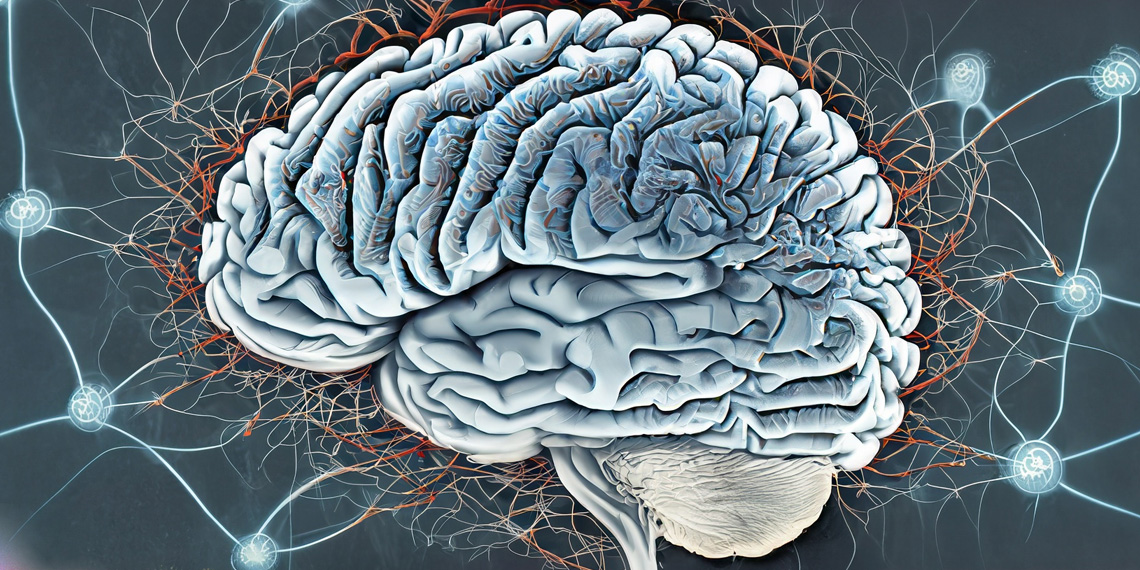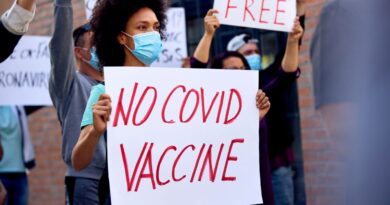People prone to apophenia are more likely to believe COVID-19 conspiracy theories and paranormal phenomena

A recent study conducted on undergraduate students in Switzerland found that people who tend to see objects in pictures where there are none are more likely to believe in COVID-19 conspiracy theories and paranormal phenomena. The study, published in i-Perception, examined the relationship between pattern perception and conspiracy belief endorsement.
One of the most important tasks of the perception system in our brains is to identify meaningful patterns in the streams of sensations received by our sensory organs. That is the basis of our ability to identify objects in our environment and interact with them. However, sometimes human brains show a tendency to seek out and find patterns that do not actually exist. The phenomenon of perceiving meaningful patterns or connections in random or ambiguous sensory patterns is known as apophenia.
Apophenia can occur in various contexts, such as visual patterns, auditory signals, or even in the interpretation of data or events. It is closely related to pareidolia, which specifically refers to the perception of familiar objects or patterns, such as faces, in random stimuli like clouds or stains. Both apophenia and pareidolia are examples of how the human brain actively seeks structure and meaning in the environment, often leading to the recognition of patterns that are not objectively present.
Recent studies have shown that individuals might differ in their proneness to perceive patterns in sensory stimuli in which such patterns are not present. Study authors Matthias Hartmann and Petra Müller wanted to investigate whether this tendency to perceive patterns that are not present in the observed material might be related to a tendency to endorse beliefs that are not supported by evidence such as COVID-19 conspiracy theories or beliefs in the existence of paranormal phenomena. They proposed that psychological mechanisms behind the perception of non-existent patterns might be the same mechanisms that make one endorse beliefs without evidence.
The study involved 278 undergraduate students as participants. The researchers used 10 images from the modified Snowy Picture Task. In this task, individuals were shown pictures of a snowy landscape that essentially consisted of random black and white visual patterns. Participants were asked to describe what they saw or provide interpretations. In some of the images, researchers embedded objects that could be recognized with effort.
Participants were informed that some of the images contained hidden objects, while others did not. For each image, they were asked to rate on a scale from 1 to 6 how confident they were that an object was hidden within it. In addition, participants completed assessments of their belief in the paranormal (using the Proneness to Paranormal Scale) and in COVID-19 conspiracy theories, which were designed by the authors themselves (e.g. “COVID-19 could have been stopped right at the start, but the large companies made a business out of keeping it going”).
The results revealed that participants who believed in the paranormal were also more likely to endorse COVID-19 conspiracy theories. Additionally, participants who were more inclined to report the presence of an object in pictures where no object actually existed were also more likely to believe in COVID-19 conspiracy theories. The connection with belief in paranormal phenomena was also observed, although it was weaker. The level of certainty regarding the presence of objects in pictures that did contain objects was not associated with these beliefs.
“These results suggest that perceiving illusory patterns is a common mechanism underlying conspiracy and paranormal beliefs,” concluded the study authors. “The effect of belief was specific to situations where no target was present, indicating that endorsing unfounded beliefs is not associated with increased perceptual sensitivity, but rather with a higher likelihood of reporting something when there is actually nothing.”
“Regarding conspiracy beliefs, it is known that distrust in institutions (government, science) and biased processing of information play significant roles. The present findings suggest that the cognitive bias to see meaningful connections in noise can influence both socio-political cognition and perceptual decision-making.”
The study provides a valuable contribution to the scientific study of psychological mechanisms behind the endorsement of beliefs in falsehoods. However, it should be noted that the number of images used in the study was small and all participants were undergraduate students. Studies with larger numbers of stimuli and on different populations might not yield identical results.
The study, “Illusory perception of visual patterns in pure noise is associated with COVID-19 conspiracy beliefs”, was authored by Matthias Hartmann and Petra Müller.


